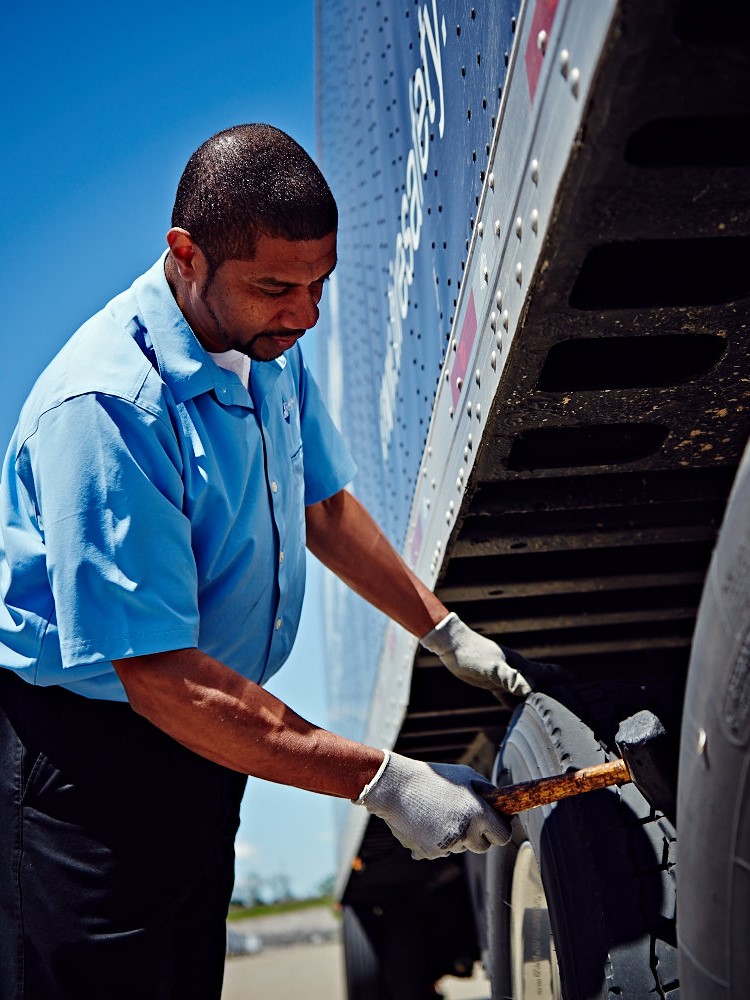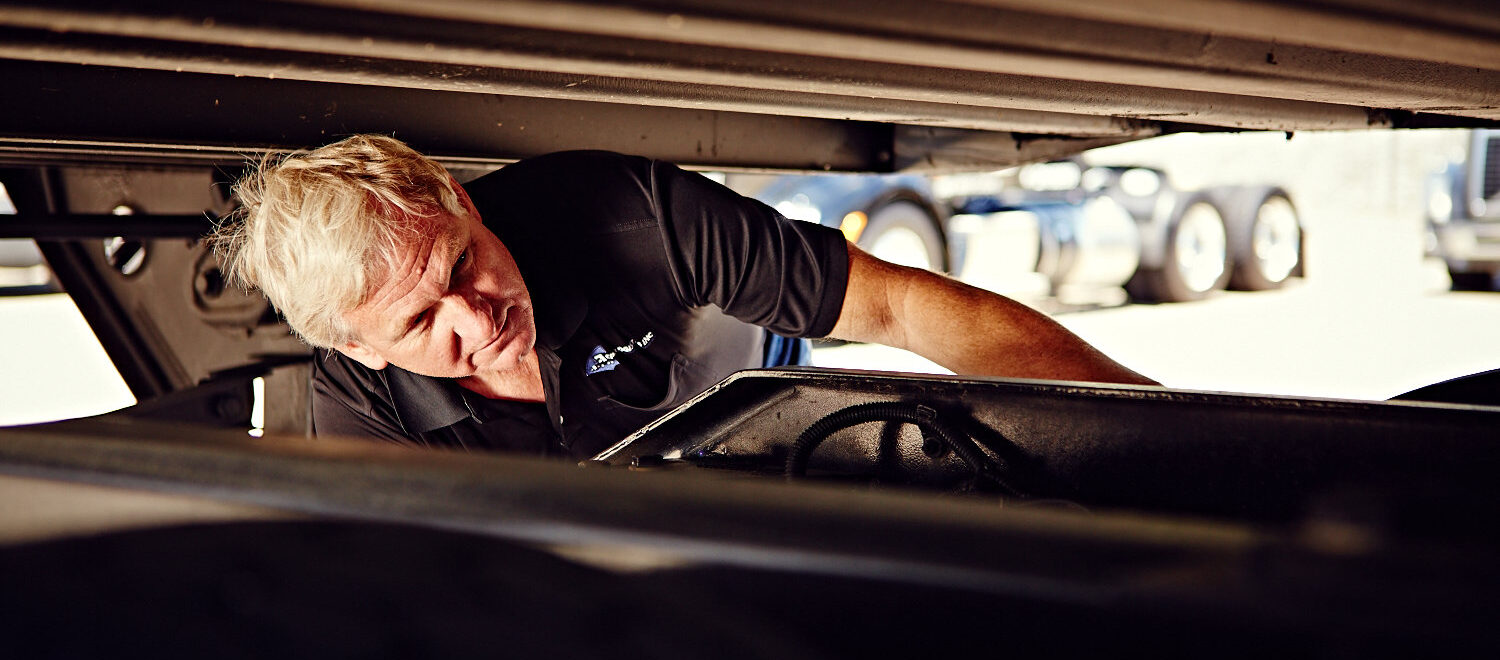Certified inspectors from the Commercial Vehicle Safety Alliance (CVSA) conduct International Roadchecks for three days every year. Inspections of all commercial motor vehicles take place at weigh and inspection stations, designated inspection areas and along roadways across the United States, Canada and Mexico.
According to the CVSA, a standard inspection focuses on both driver and vehicle safety compliance.
- Vehicle compliance: Inspectors will check a vehicle’s brake systems, cargo securement, coupling devices, driveline and driveshaft components, driver’s seat, fuel and exhaust systems, frames, lighting devices, steering mechanisms, suspensions, tires, wheels, rims, hubs and windshield wipers.
- Driver compliance: Inspectors will also examine the driver’s operating credentials, hours-of-service documentation, status in the Drug & Alcohol Clearinghouse, seat belt usage, and for alcohol and drug impairment.
This year the CVSA is focusing on two areas: anti-lock braking systems (ABS) and cargo securement. Although it is not an out-of-service violation, ABS is a critical safety feature that significantly reduces collisions. Its basic function is to prevent wheels from locking up or skidding, allowing drivers to maintain control while braking.
On the other hand, 10.6 percent of vehicle out-of-service violations last year were attributed to cargo securement. Improper securement can lead to risks on the road such as fallen cargo that could cause a traffic hazard or even collisions. Learn more about these focus area inspections here.

To prepare for upcoming vehicle inspections, follow these tips:
Brakes
- Check for missing, non-functioning, loose, contaminated or cracked parts on the brake system.
- Check for S-cam rollover.
- Be alert for audible air leaks around brake components and lines.
- Check that slack adjusters are the same length (from center of S-cam to center of clevis pin), and the air chambers on each axle are the same size.
- Ensure the air system maintains air pressure between 90-100 psi (620-690 kPa).
- Inspect for non-manufactured holes (rust holes, holes created by rubbing or friction) and broken springs in the spring brake housing section of the parking brake.
- Measure pushrod travel.
- Inspect required brake system warning devices such as ABS malfunction lamps and low air pressure warning devices.
- Inspect the tractor protection system, including the bleed back system on the trailer.
- Ensure the breakaway system is operable on the trailer.
Coupling Devices
- Check the safety devices (chains, wire rope) for sufficient strength, missing components, improper repairs and devices that are incapable of secure attachment.
- On the lower fifth wheel, check for unsecured mounting to the frame, any missing or damaged parts, or any visible space between the upper and lower fifth wheel plates.
- Verify the locking jaws are around the shank and not the head of the kingpin.
- Check that the release lever is seated properly and the safety latch is engaged.
- Check the upper fifth wheel for any damage to the weight bearing plate (and its supports) such as cracks or loose or missing bolts on the trailer. On the sliding fifth wheel, check for proper engagement of the locking mechanism (teeth fully engaged on rail) and worn or missing parts.
- Ensure the position does not allow the tractor frame rails to contact the landing gear during turns.
- Check for damaged or missing fore and aft stops.
Fuel and Exhaust Systems
Check your fuel tanks for:
- Loose mounting, leaks or other conditions.
- Loose or missing caps.
- Signs of leaking fuel below the tanks.
Check exhaust systems for:
- Unsecured mounting.
- Leaks beneath the cab.
- Exhaust system components in contact with electrical wiring or brake lines and hoses.
- Excessive carbon deposits around seams and clamps.
Frame, Van and Open-Top Trailers
- Inspect for corrosion fatigue, cracked, loose or missing crossmembers, cracks in the frame, and missing or defective body parts.
- Look at the condition of hoses.
- Check the suspension of air hoses on vehicles with sliding tandems.
- On the frame and frame assembly, check for cracks, bends, sagging, loose fasteners or any defect that may lead to the collapse of the frame. Also inspect for corrosion, fatigue, cracked or missing crossmembers, cracks in the frame, and missing or defective body parts.
- Inspect all axles.
- For vans and open-top trailer bodies, look at the upper rail and check the roof bows and side posts for buckling, cracks or ineffective fasteners.
- On the lower rail, check for breaks accompanied by a sagging floor, rail or crossmembers. Also see if they are broken with loose or missing fasteners at the side post adjacent to the crack.
Lighting
Inspect all required lamps for proper color, operation, mounting and visibility.
Securement of Cargo
- Make sure you are carrying a safe load.
- Check tailboard security.
- Verify end gates are secured in stake pockets.
- Check both sides of the trailer to ensure cargo is protected from shifting or falling.
- Verify that rear doors are securely closed.
- Where the load is visible, check for proper blocking and bracing.
- Examine the inside of the trailer to ensure large objects are properly secured.
- Check cargo securement devices for proper number, size and condition.
- Check tiedown anchor points for deformation and cracking.

Tires
- Check tires for proper inflation, cuts and bulges, regrooved tires on the steering axle, tread wear and major tread groove depth.
- Inspect sidewalls for improper repairs, exposed fabric or cord, contact with any part of the vehicle, and tire markings excluding it from use on a steering axle.
Wheels and Rims
- Inspect wheels and rims for cracks, unseated locking rings and broken or missing lugs, studs or clamps.
- Check for rims that are cracked or bent, have loose or damaged lug nuts and elongated stud holes, have cracks across spokes or in the web area, and have evidence of slippage in the clamp areas.
Hubs
Check the hubs for lubricant leaks, missing caps or plugs, misalignment and positioning, and damaged, worn or missing parts.
Steering
Follow these steps to check the steering lash:
- Turn the steering wheel in one direction until the tires begin to pivot.
- Place a mark on the steering wheel at a fixed reference point.
- Turn the wheel in the opposite direction until the tires start to move again.
- Mark the steering wheel at the same fixed reference point.
- Measure the distance between the two marks.
The amount of allowable lash varies with the diameter of the steering wheel.
Suspension
- Inspect the suspension for indications of misaligned, shifted, cracked or missing springs, loose shackles, missing bolts, unsecured spring hangers, and cracked or loose U-bolts.
- Check any unsecured axle positioning parts and for signs of axle misalignment.
- On the front axle, check for cracks, welds and obvious misalignment.

